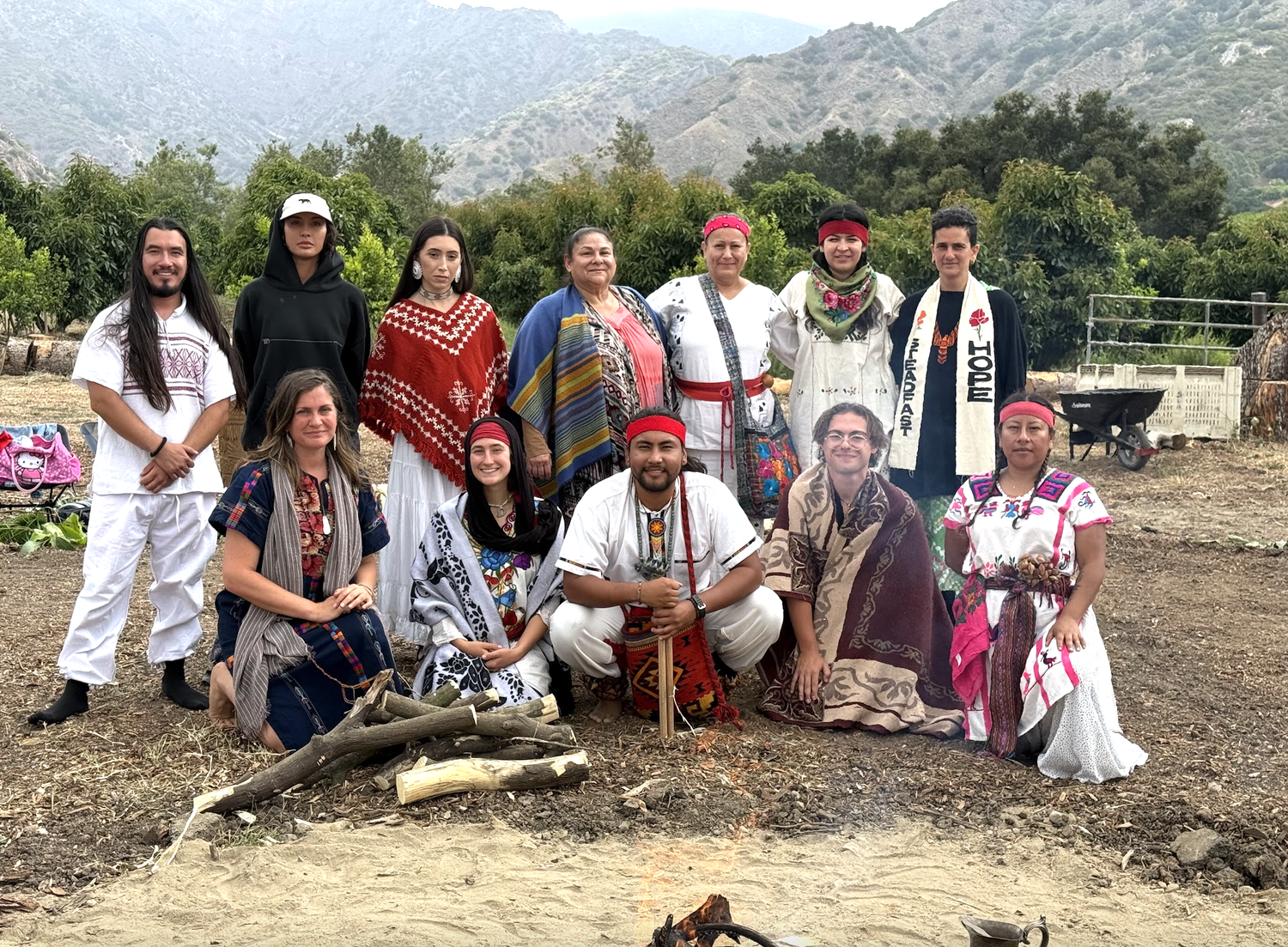First Summer Solstice in Decades
Each year, from the spring equinox to the summer solstice, the earth swells with light and energy. At the Sanctuary, this season often feels like a drum pulled taut—vibrating with life, revealing new patterns, processes, and relationships. During this year’s equinox, the team experienced a powerful sense of release from old patterns and the emergence of new revelations. Just weeks before solstice, the Sanctuary’s founder received a call from her father, who was helping organize the global Solstice Unites initiative: “Can you all participate in solstice?”
The Sanctuary reached out to Debra Hopkins, a Chumash elder and founder of the Sespe Bioregional Center, a partner whose work in Fillmore, CA—at Eden Forest Collective—has been a guiding force.
“We needed to listen—deeply—to what the ancestors might be saying in this uncertain and sacred time. We need their council,” Debra said. In that spirit, and despite decades of strained intertribal relations and ongoing ICE raids in the region, a ceremonial space was opened.
The Roots of Solstice
Though not a major holiday in Judaism, solstice has been central to many cultures for generations. For thousands of years, Chumash and Ohlone peoples in California gathered to honor the solstice—large seasonal anchor points that strengthened community bonds and intertribal relations. Expert skywatchers, they identified solstice-aligned rock art sites where shafts of sunlight pierce sacred spaces only on the solstice.
Those relationships were violently disrupted under Spanish and later American occupation. This year marks 175 years since the onset of state-sanctioned violence against Native peoples in California—laws that legalized enslavement, displacement, and killing; militias funded to carry out massacres; and federal reimbursement that underwrote genocide. Between 1846 and 1873, California’s Native population declined by 90%. Villages were burned, ceremonies banned, children stolen and sold. Solstice observances were driven underground; knowledge keepers were punished or silenced.
Holding Solstice Amid State Terror
Today, a new form of state terror ripples across the Santa Clara River Valley. ICE raids tear through towns often built atop the bones of massacred Indigenous people. Descendants of the displaced—and migrants fleeing U.S.-fueled violence and economic dispossession elsewhere—are criminalized for their survival.
To witness a solstice ceremony rise again in this time and place—in defiance of erasure and in resistance to ongoing harms—felt like a miracle, a gift beyond measure.
Despite exhaustion and intimidation, nearly thirty people gathered to light the sacred fire, sleep under the stars, and dance from morning until dusk. A heat wave had gripped the valley all week, yet during the twenty-four hours of ceremony a soft cloud layer and gentle breeze arrived—a small blessing that did not go unnoticed. Many felt held by something sacred.
After hours of dancing, participants formed a sacred circle. Most were strangers; many were longtime organizers. Stories of activism were shared, tears flowed, gratitude moved through the group. Many felt their ancestors present—“that they had crossed over so they could help from the other side,” as one participant offered.
Among those gathered were people responding to ICE raids in Southern California and community members with family and friends in Israel, Palestine, and Iran. Though deeply tired, many said this was the kind of support they needed to keep going—and to keep resisting the harsh realities of this moment.
As Debra reminded us in her Solstice Unites interview:
“This is what we need in this time to bring unity. Solstice helps us come together and asks us to pray, to pray in numbers—to give us strength and face whatever Creator has in store for us now.”
Remember, Restore, Renew
Coming together to remember, restore, and renew is a powerful antidote to forces that want communities to forget, fragment, and drift. When we gather, we rekindle connection. We resist. We rebuild. We remember who we are.
Let this story be a small light in a time of despair—a reminder that ritual and community matter, maybe more than ever.
